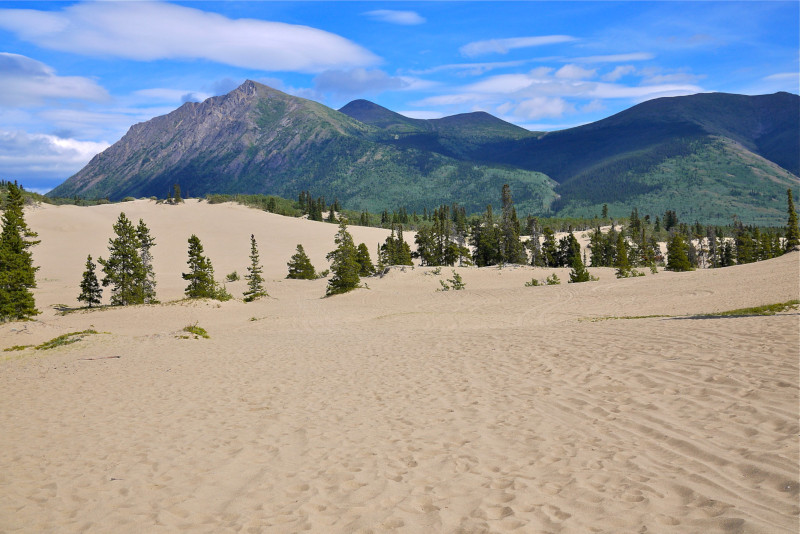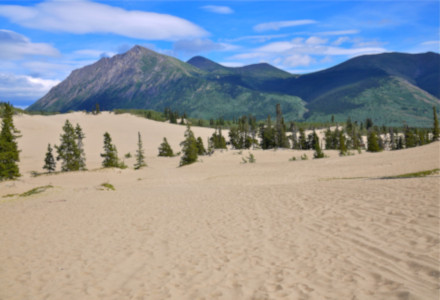
Carcross Desert Facts
- The location known as the Carcross Desert stands out from other similar locations around the world. That’s partly due to its uniqueness. Just like the Maine Desert, its status as an actual desert also remains a source of ongoing debate among scientists.
- Assuming its status as confirmed, this remarkable geological feature further remains one of the northernmost deserts on earth. In point of fact, one of the most astounding things about this very surprising site remains its geographical location.
- That certainly isn’t the only thing that makes this impressive site so fascinating to those visit it, however. Quite interestingly, the story of the conservation efforts for the fabulous Carcross Desert unfolds significantly different from most similar sites.
- For one thing, there remains a most unusual story behind its formation. The beginning of this intriguing story took place in the year 1992. To be more precise, at that time, the local government attempted to enact a conservation program for the region.
- Astonishingly, and unfortunately, the local populace actually rejected the idea. This represented exactly the opposite of what usually happens in such situations. But, the cause was an ulterior motive. The location is popular with the local inhabitants.
Related Articles
Carcross Desert Physical Description
The small but gorgeous Carcross Desert elegantly proves the point that beauty does not depend upon sheer physical size. That statement holds true due to the simple fact that this marvel of Nature has a size that’s dwarfed by the better known deserts of the world.
In fact, this region of the world boasts an area equaling only roughly 6.23 sq mi (16.14 sq km). But, its distinctiveness does not end there. That’s because the entirety of the region of the Carcross Desert remains arid, despite the climate of the surrounding region.
This situation occurs in relation with local weather patterns. That’s due to the rain shadow effect of the nearby Yukon mountains. The distinctive area is also prone to strong winds which continually supply the region with new sand from the shores of Lake Bennet.
Carcross Desert Location, Ecology, and Recreation
Despite the name, the amazing Carcross Desert does not technically measure as dry enough to be classified as a desert. The feature nonetheless remains significantly drier than the surrounding area, though. In point of fact, this extends to the entire country.
That holds true due to the fact that the site receives less than 2 in (50 mm) of rain per year. The rest of the country in which it formed, Canada, has a much damper climate. Despite these highly arid conditions, however, a few hardy plants have adapted to the climate.
Most notable among these is the rare Baikal Sedge. The plant’s only known to exist in four other locations in North America. Another species of flora that flourishes here, despite being extremely rare in surrounding regions, is the lovely but delicate Yukon Lupine.
Geological evidence also shows that the area now forming the Carcross Desert holds a somewhat surprising history. To the great amazement of many, the region once comprised a lake bed. This, however, occurred long ago, back in the Pleistocene Epoch.
To be more precise, as well as technically correct, the area actually qualifies as a close grouping of separate sand dunes. These also appear closely adjacent to the nearby Lake Bennet. Also, the bountiful sand deposited during the last period of glacial activity.
The extremely unusual location further quickly earned the formation a distinct status. That’s due to its popularity for various recreational activities. As a result, numerous local residents, and increasingly tourists, as well, utilize the dunes for several activities.
These include numerous types of locally popular functions. Among these is such frequent uses as hiking, all-terrain vehicular activities, and sand boarding. Finally, the nature of the remarkable site also appears to be rapidly making it a popular site for skydiving.
Features Sharing Its Region
Prince Edward Island Spotted Lake Pingualuit Crater Lake
Check out our other articles on 5 Rare Mind-Blowing Cloud Types, Blue Shark, Salar de Uyuni, Naked Man Orchid, Black Rain Frog, Six-Spotted Fishing Spider, Plumed Basilisk

